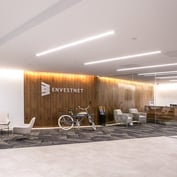By B. Bruce Dale
 The document automation and management systems installed by large insurers more than a decade ago are the collector cars of todays information technology world–still running and charming in their own way but woefully inadequate for todays hypercompetitive markets.
The document automation and management systems installed by large insurers more than a decade ago are the collector cars of todays information technology world–still running and charming in their own way but woefully inadequate for todays hypercompetitive markets.
In addition, just as antique vehicles become increasingly expensive to maintain the older they get, legacy document management systems consume an ever-greater share of tight IT budgets as their useful lives are stretched.
To succeed in todays world, insurers must include document automation and management in their business strategy. Thankfully, the capabilities and functionality now available in many of these systems are more akin to the accoutrements of todays high-end luxury vehicles than to the limited functionality of yesterdays classics.
This article will describe how document automation and management systems have evolved, what functionality must be included when a new solution is implemented and some unique ways insurers are achieving this functionality without installing the solutions in house.
When document automation and management systems were first introduced, they represented a significant advance over the manual production environments that preceded them. Insurers were able to assemble and produce policies electronically, reducing the time required to issue new documents. These systems served their purpose well and were swiftly adopted.
However, in the past decade many insurers have done little to update their document automation and management systems. Adopting an “if it aint broke, dont fix it” approach, insurers have patched their systems when necessary to fix bugs, enhance functionality or extend useful life. In addition, as many insurers have merged with or acquired other insurers, the disparate systems have often been cobbled together. The resulting band-aids have made these systems increasingly expensive to maintain.
Current business realities and regulatory requirements also have added an entirely new level of complexity to the equation. Whether fulfilling government mandates or integrating marketing messages into all customer communications, the needs of todays insurer have outstripped legacy document automation and management systems.
At the same time, insurers must find ways to do more with less. This means that even though their business has become more complex, new systems should take less customization and time to implement, require fewer numbers of programmers and be easier to maintain, all at a lower cost.
While evaluating the steps to take in establishing a proper document automation and management solution, it is important to understand some of the subtleties and nuances in the language. Document imaging and document management are related, but distinct, capabilities. Understanding the similarities and distinctions is important to developing a more robust and flexible system.
Document imaging tends to define systems that manage and archive static documents. These documents generally do not change and must be archived in their final format to satisfy legal or regulatory compliance issues. Maintaining an original, signed copy of a policy application, exact down to the pixel level, is one example.
Document management generally defines systems that control document-based workflows and create “smart” documents with data that can be archived, changed and then reused to create new documents. An example would include a policy declaration page that changes as coverages are added or deleted, or claims correspondence that changes as a claim is resolved.
A complete system will include the ability to efficiently archive static documents as exact representations of originals, as well as reuse that information when creating new documents, such as policy renewals. In addition, it will include the ability to handle documents that can be updated and changed as business activities take place. Thus, document imaging and document management, capabilities that might be considered “cousin” technologies, form two sides of the coin.
Just as auto buyers now expect any new auto to include capabilities such as power steering and brakes, power windows and air bags, certain functional components are critical in a modern document automation and management system. A complete description would require a separate article for each capability, thus this is meant only as a checkpoint for what to consider when evaluating any new system. Systems with too many limitations should be eliminated; otherwise, one risks selecting a product that cannot grow with the business, and that instantly becomes yesterdays bucket of bolts.
A robust document automation and management system should include:








 June 01, 2003 at 08:00 PM
June 01, 2003 at 08:00 PM










